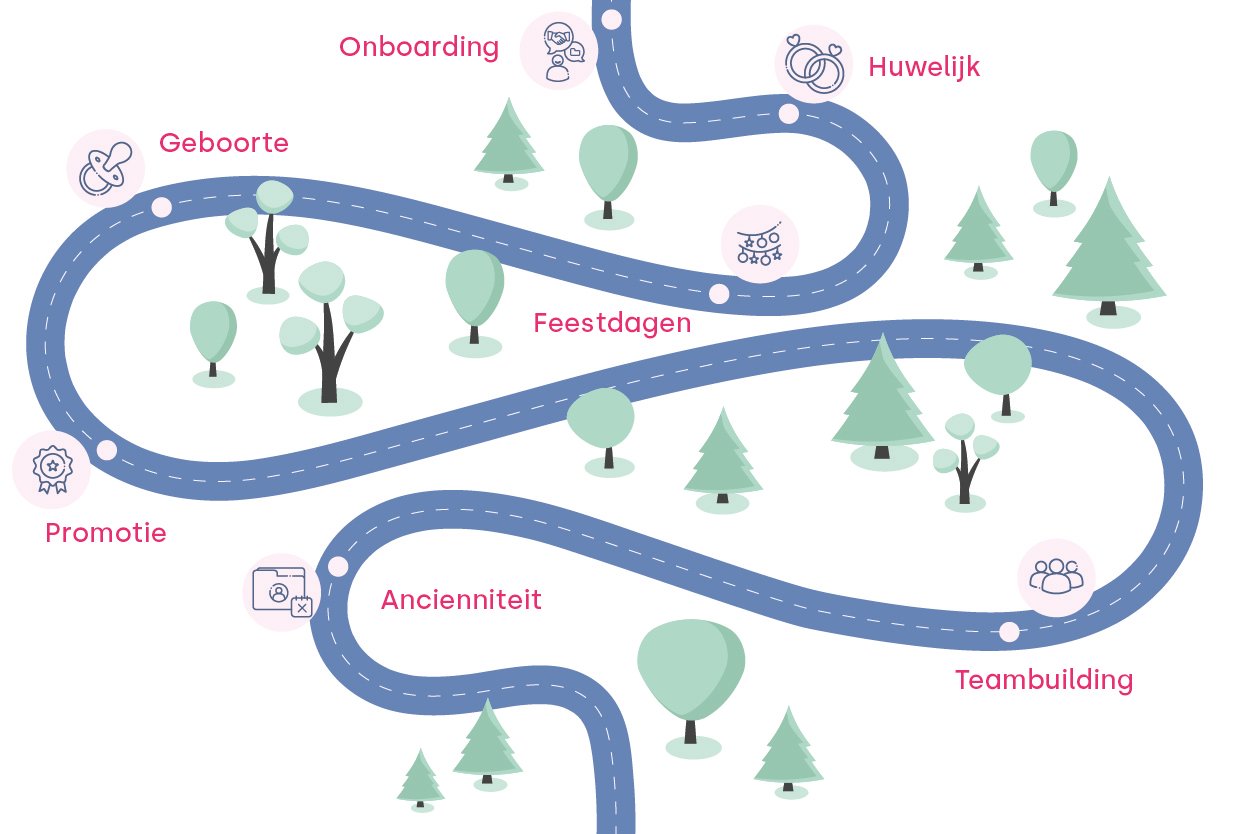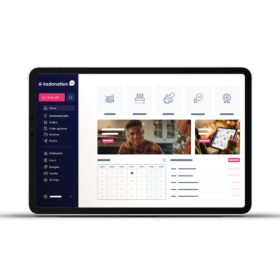What is offboarding?
As an employer you need to offer good onboarding for your new employees – no news there. But what about offboarding? Part of exit management, it has grown in importance in recent years. Whether a termination of employment is the decision of one (or both) party(ies), the essence remains the same – to make this a positive experience.
Offboarding covers everything you need to organise when an employee leaves the company. From the transfer of responsibilities to other employees to deactivating accounts, returning materials, arranging payments and an exit interview perhaps with a gift as a thank you, etc. These are all important steps for ending the relationship well.
Coming up with a good exit strategy takes time, but it’s an important thing to do. There’s nothing more annoying than having to contact someone a few weeks after they’ve left because they still need to sign a document or when you realise your former colleague never gave their badge back.
Why is offboarding important?
A lot of companies invest plenty of time and effort in attracting, onboarding and training their employees, but don’t have a clear strategy when it comes to the last phase of the employee journey. This is a real pity, because it means they miss an opportunity to get valuable feedback and information.
No matter how hard you try to retain your employees, sometimes it’s simply time to say goodbye. Of course, you’d prefer that to be when they retire, but millions of employees choose to leave their employer every year. You can’t always control their reasons. What you can influence is the feeling that employee takes with them. And how you feel about it too. That’s what will stay with both parties for a long time afterwards.
Ultimately, you want that person to leave as an ambassador for your company. Former employees who constantly complain about their experience with your company are doing it a lot of damage. Conversely, an ambassador can help you find new employees, or even extra customers. But you’ll only achieve that if you actively listen to their experience and support them as best as possible during the last phase of their career with you.
Why should you invest in offboarding? Remember the golden rule: ‘never burn your bridges’. Something to keep in mind, because more often than ever before, companies are coming across boomerang employees: staff who at some point decide to return to a previous employer. A smart offboarding process therefore has a major impact on your company’s reputation and the job satisfaction of your current team.
Offboarding vs. onboarding: what’s the difference?
Apart from the fact that on- and offboarding are at opposite ends of the employee journey, they’re actually not that different. Onboarding is about a smooth start for your new colleague, while offboarding focuses on the process of leaving employment and everything that’s part of that. To achieve the best processes possible, you’ll need to invest in them. The more time and effort you put into these phases, the more positive the experience for everyone.
Both the arrival and departure of a team member can have a big impact on the day-to-day running of your organisation. Responsibilities are much easier to transfer than what that person brought to the team atmosphere. Getting to grips with the internal dynamics is never easy, but clearly working out your offboarding process will already take care of a lot.

During the onboarding and offboarding process, both parties might feel insecure. If you don’t communicate well, a new colleague can feel very stressed. Questions like ‘what is expected of me?’ and ‘where do I add value?’ pop up and can lead to an uneasy feeling.
But uncertainty can also appear at the end of a working relationship. When you leave, you have knowledge of the how and why. As a result, you (sometimes unintentionally) sow seeds of doubt in the other party. Questions like ‘could I have done anything to make them stay?’ or ‘are there other reasons I have to leave?’ can leave an unpleasant aftertaste. These questions can come up for the rest of the team too: ‘Is that team member going to be replaced?’, ‘Who will (temporarily?) take over their responsibilities?’ and so on. So be sure to take everyone into account.
Offboarding: do’s en dont’s
Smart offboarding is therefore becoming more important. But what’s the best way to go about it? These do’s and don’ts will get you started.
What you definitely should do:
- Hold exit interviews and look carefully at the results. This kind of feedback conversation is very valuable as input is often shared more freely. During this conversation, you as a company can also go the extra mile and show your appreciation for the employee, regardless of who ended the relationship. But most important of all: do something with the feedback!
- Keep in touch with your ‘alumni’ employees. Connecting with them on LinkedIn is already a good step, but inviting all your former employees to a big staff party can also create connections. You never know, you might land the company a boomerang employee.
- Remember to thank the employee and give them a goodbye gift. This is really appreciated by any ex-employee, but the message has an even bigger impact when that member of staff is retiring. Want to let your employee choose their own gift? Then you can’t go wrong with our Kadonation Gift Card.
- Make time for an extensive handover, preferably before their last working day.
- Take care of all the administration in good time. Has an out-of-office been set up? Do their accounts and access to tools automatically expire?
- Make sure all work materials (such as laptop and phone) are handed in. If your employee had a company car, perhaps you can organise a taxi to take them home on their last day.
- Organise an informal lunch for the team members of the person leaving.Communicate the departure to other employees, preferably in a personal way and not on the very last working day.
- Pass around a greeting card for the whole team to write a personal goodbye message. Make sure that card is a priority! A personal message isn’t just important for offboarding, but it’s also a small gesture that has a lot of impact on plenty of other occasions too.
What you absolutely want to avoid:
- Taking the departure of your employee personally. Seeing or letting someone go is painful, but keep those feelings out of the offboarding process.
- Closing the door permanently. Just leave it ajar, you never know.
- Treating retirement as a standard farewell. It’s not – it’s a really important milestone! Invest in a slightly longer offboarding process and show your appreciation for everything that person has done. Show retirees the respect they deserve and it will certainly pay off. Who knows, they might even return part-time.
- Forgetting about contract employees or freelancers. It might have been a different kind of relationship, but they still need to get the right kind of offboarding. Also ask them for feedback – their input might be even more honest because of the temporary nature of the relationship.
At least as important as saying goodbye to your employees in the right way is giving a warm welcome to new team members. Your onboarding plays a key role in this. Our free checklist will help you get started.
Isabel
Read more by IsabelRelated stories.

First day at work: how to get new employees off to a flying start

Practise what you preach: Kadonation’s own gifting policy.


